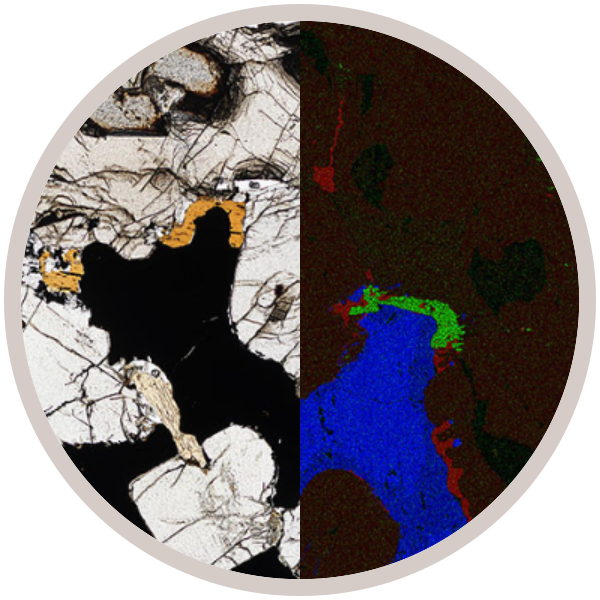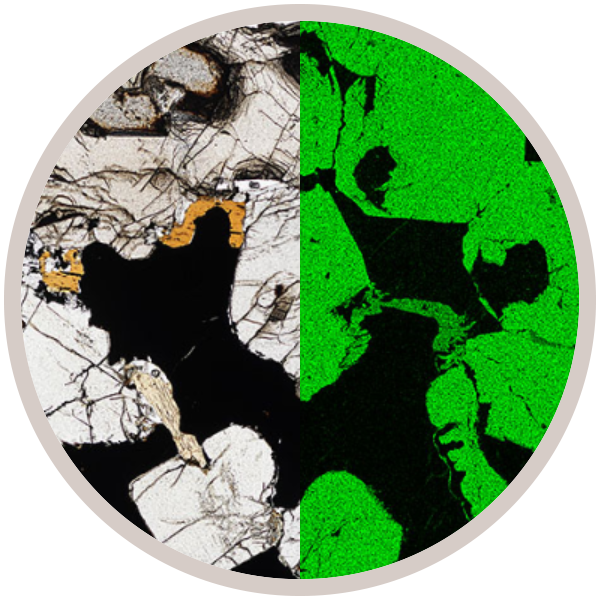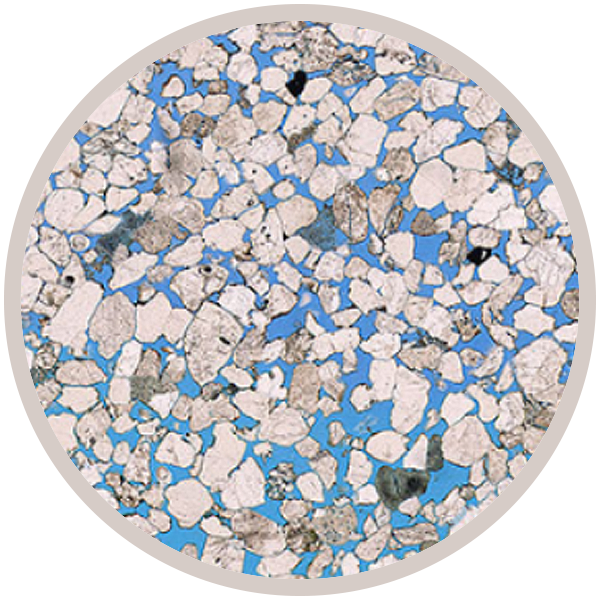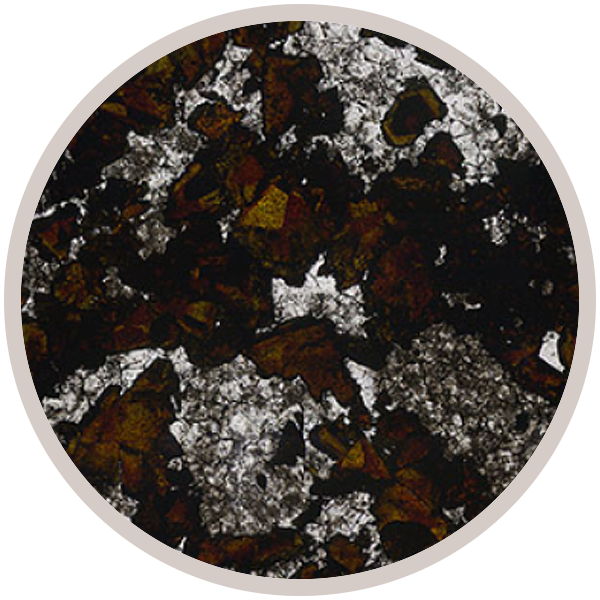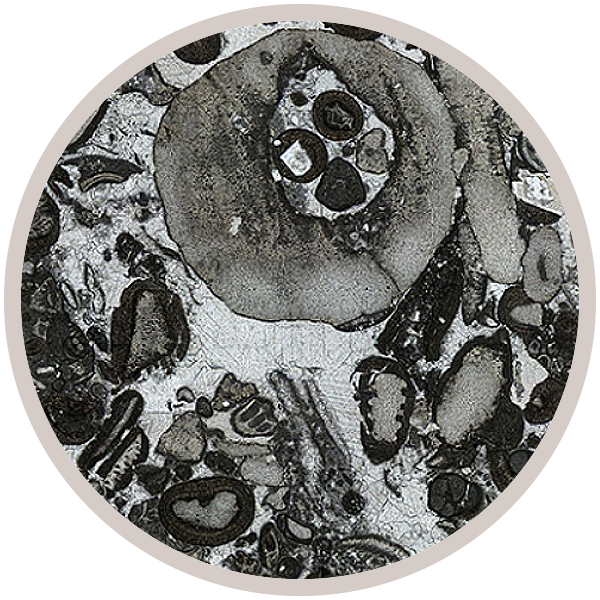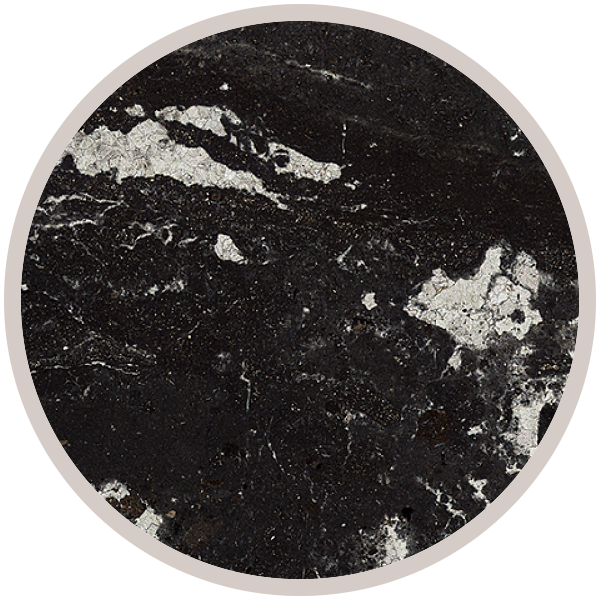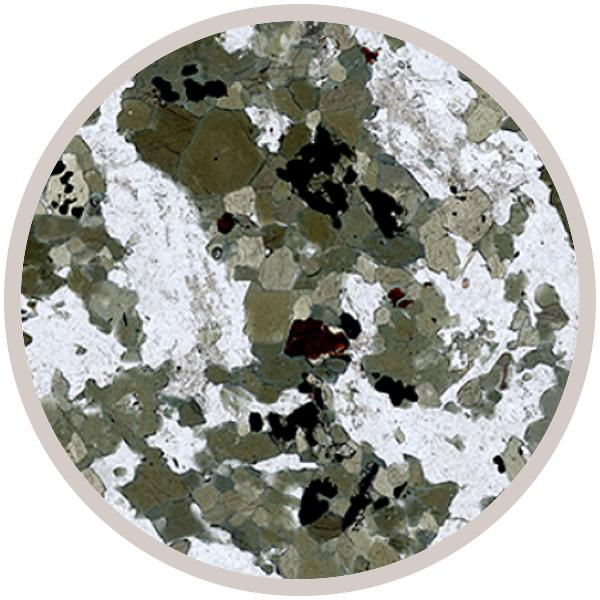
Fact sheet
An amphibolite raft in the Thor Granite (Caledonian). The sample was collected from a huge xenolith, or raft, enclosed within the Thor pluton, which is one of the component plutons of the Donegal Granite batholith. The random orientation of the hornblende and plagioclase grains is consistent with thermal metamorphism, with no directed stress, and the brown colour of the hornblende suggests that the conditions were at the high-temperature end of the spectrum of amphibolite-facies conditions. The protolith was a basic intrusion from about 600 Ma which was one of many such intrusions invading the Dalradian Supergroup sedimentary rocks before they were first metamorphosed during the Grampian Orogeny (470 Ma). This amphibolite was totally recrystallized by the heat from the surrounding granite about 400 Ma. Rotation 1 - Best cross section of hornblende with two sharp cleavage traces and symmetric extinction. Rotation 2 - Twinned hornblende 15° extinction to twin plane. Also twinned plagioclase.
A group of iCRAG members (UCC, TCD, NUIG and UCD) in partnership with The Open University have created a new collection of Irish rocks and associated learning materials for the Virtual Microscope of Earth Sciences.
The project which is entitled 'The Geoscience e-Laboratory (GeoLab): Developing Digital Teaching and Learning Resources for the Virtual Microscope' seeks to develop open access teaching resources in the form of interactive exercises and assessment rubrics for the Virtual Microscope. Find out more about the project at the GeoLab website.
The Collection was created using funding from the Faculty of Engineering, Mathematics and Science at Trinity College, Dublin, and the National Forum Teaching and Learning Enhancement Fund. One sample (Merensky Reef) showcasing x-ray element maps in addition to the usual PPL/XPL/REF images was funded by Prof. Balz Kamber's MetalIntelligence EU training network grant.

